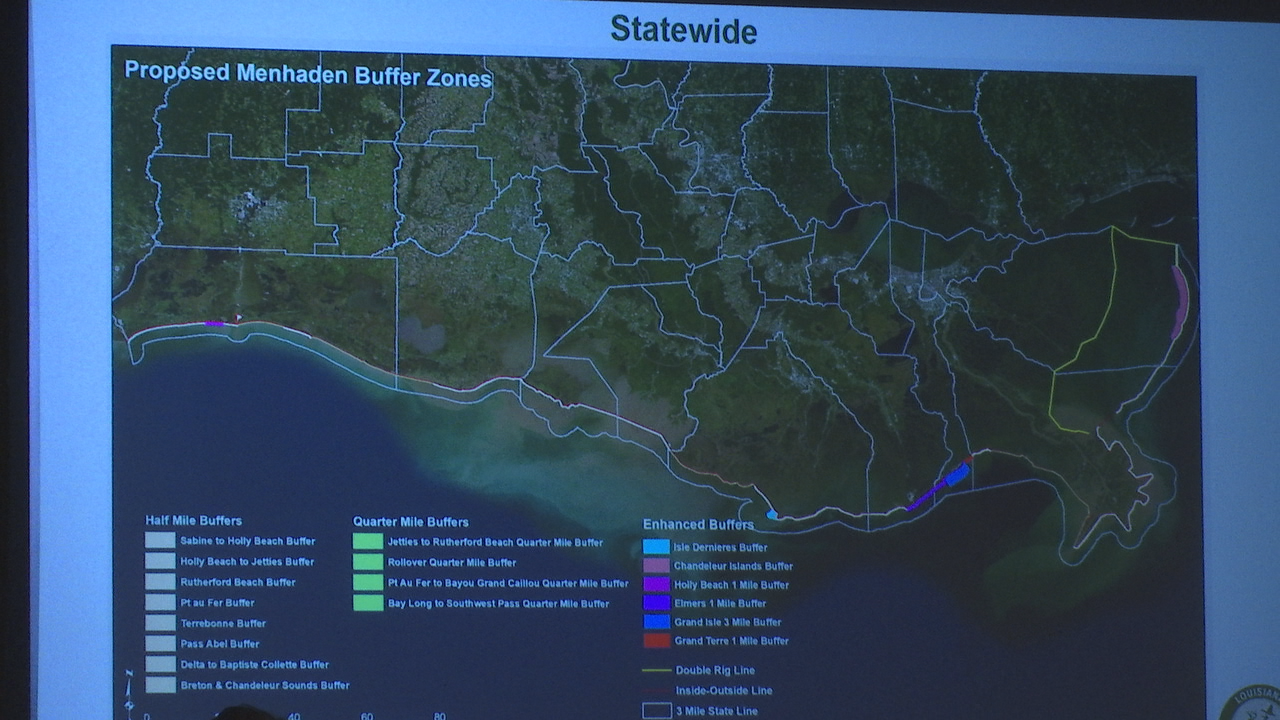In win for commercial menhaden fishing industry, LDWF approves controversial loosened regulations
BATON ROUGE — The commercial menhaden fishing industry came out on top at Thursday's Louisiana Department of Wildlife and Fisheries Commission meeting, while the hundreds of recreational fishermen in attendance left ready to keep fighting.
In 2024, regulations were put in place requiring menhaden boats to fish half a mile or more off most of Louisiana's coastline west of the Mississippi River. That move was seen as a step in the right direction for recreational anglers, many of whom want a no-fishing buffer zone of one mile or more.
On Thursday, the LDWF Commission voted 4-3 in approval of a notice of intent to decrease that no-fishing buffer zone back down to a quarter of a mile in some areas, but increase it in other areas seen as more sensitive.

Dozens of captains, fishermen, spokespeople, etc., attended the meeting to represent the interests of menhaden companies like Westbank Fishing and Daybrook Fisheries. Company representatives report a 20-25% reduction in their total catch last year, and their fishermen are compensated based on the amount they catch. They argued that the half-mile buffer zone was negatively impacting their profits and, in turn, the salaries of their more than 2,000 Louisianian employees.
"The lost volume has materially reduced the earnings of every crew member and every shore-based employee and has severely impacted the company's financial performance," Francois Kuttel, a majority owner of Westbank Fishing, said.
Recreational fishermen, with representation from organizations like the Coastal Conservation Association and the Theodore Roosevelt Conservation Partnership, feel that the industry is going back on the compromise it made a year ago. They already felt that half a mile wasn't enough in the first place and allowing the menhaden boats closer to shore increases the amount of bycatch hauled in, meaning highly sought-after species like redfish and speckled trout get accidentally caught.
Trending News
"Grand Isle has a three-mile buffer zone and Grand Terre has a one-mile buffer zone, and we still witness hundreds of bull reds die and wash up on the beach," Keith Bergeron said. He's a charter captain based in Grand Isle.
Both sides cited data from a $1 million bycatch study, paid for by LDWF, that was released in July.
After nearly three hours of comments from both sides, the commission discussed the arguments it was presented.
"Those two companies, if they go out of business, are hurting two parishes where there is people who need jobs and people who can not find the same good-paying jobs that we have right now," Commissioner Kevin Sagrera said.
While the NOI was ultimately approved by the commission, it won't be finalized until it passes through the legislature. It will go through a public comment period until January 23, followed by an opportunity for any changes or even a dismissal. According to LDWF, the earliest it could go into effect is March 20.


